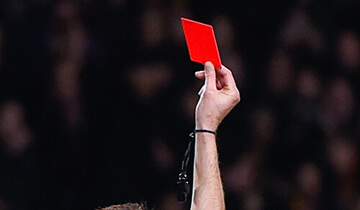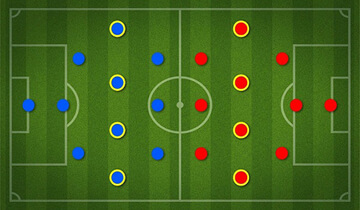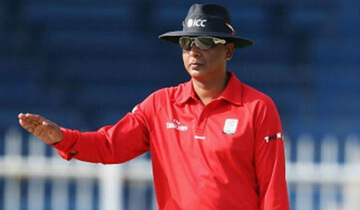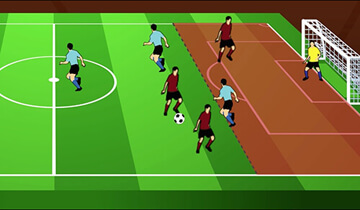Creating a Winning Baseball Roster Plan
Baseball is a team sport that requires careful planning and strategy when putting together a roster. The ideal roster has the right balance of positions, skills, experience levels, and diversity to be competitive over the course of a long season. Here are some key considerations when creating a winning baseball roster plan:
Fill All the Positions
A Standard Roster
A standard baseball roster has 9 positions: pitcher, catcher, first base, second base, shortstop, third base, left field, center field, and right field. Your roster plan needs to ensure you have strong coverage at each position. Carry at least one backup player capable of filling in at multiple positions.
Build a Strong Pitching Rotation
Starting Rotation
Pitching is a demanding position that requires resting arms to avoid injury. Map out a 5-man starting rotation to cover games effectively. Plus have additional pitchers in the bullpen to play relief roles. Factor in pitchers’ throwing style, experience, and versatility when devising your pitching plan.
Bullpen
Have reliable relief pitchers like closers and specialists who can maintain leads late in games. Make sure the bullpen has multiple pitchers capable of long outings if starters falter.
Optimize Your Batting Order
Mix Up Batters
Plan a batting order that spaces out your best hitters to continually put pressure on the opponent. Mix power hitters with contact hitters, righties with lefties. Consider how speedsters can complement big RBI bats.
Build a Strong Bench
Flexible Role Players
Good teams utilize their entire roster. Have talented, flexible bench players who can pinch hit, run, and substitute in the field. These role players give you options to gain advantages in close games.
Develop Your Farm System
Promote Prospects
Developing players in the minor league farm system is key. Call up promising prospects to provide a talent pipeline. Balance homegrown players with veterans.
Use Analytics to Your Advantage
Study the Stats
Study player statistics like batting averages, ERAs, and WAR to identify strengths and weaknesses. Use data to optimize your roster plan.
Foster Team Chemistry
Seek Out Leaders
Team chemistry matters. Seek motivated players who mesh well together. Mix leaders with emerging talents. Foster camaraderie and discipline.
With careful planning considering these key factors, you can craft a well-balanced, competitive baseball roster tailored to your team’s talents, system, and goals. Adjust the plan as the season progresses to account for injuries, trades, and evolving needs. A thoughtful roster strategy is the foundation for a winning baseball team.
Baseball Roster Sizes: How They Vary By League
When constructing a baseball roster, the number of players allowed can vary greatly depending on the level of competition. Youth leagues have smaller roster limits and requirements compared to high school, college, minor league, and professional baseball teams. Here is an overview of typical baseball roster sizes across the different leagues:
Little League Baseball
Little League is a global youth baseball and softball organization that includes divisions for kids ages 4-16. Exact roster sizes depend on the age division:
- T-Ball (ages 4-6) - no set roster size
- Minor League (ages 7-11) - 12 to 15 players
- Major League (ages 9-12) - 12 to 15 players
- Junior League (ages 12-14) - 12 to 15 players
- Senior League (ages 13-16) - 12 to 15 players
The flexibility allows teams to accommodate all interested kids. Mandatory play rules ensure each player gets meaningful time on the field.
High School Baseball
Most high school baseball teams carry between 15-25 players on their rosters. However, some varsity squads keep the roster smaller at 13-16 players to focus playing time. Junior varsity teams often have larger rosters around 18-22 players as they develop less experienced athletes. Varsity teams drawing from smaller schools may also need larger rosters to field a full team.
College Baseball
NCAA Division 1 college baseball programs are allowed a maximum 35-player roster. However, the average roster size is about 30 players. Coaches use this depth to gain advantages with pinch hitters, defensive replacements, and platooning players. Scholarship restrictions often lead teams to divide scholarships between more players.
Division 2 college baseball teams have a maximum of 27 players on the roster. Division 3 college baseball rosters must not exceed 25 players.
Minor League Baseball
MLB team minor league affiliates have a 25-player active roster limit. Additionally, only 38 total players can be under contract at any time. Triple-A rosters tend to be more veteran players, while lower levels stock emerging prospects. The smaller roster sizes allow players more repetitions to develop.
Major League Baseball
MLB teams maintain 25-man active rosters from opening day until September 1st. After September 1st, the active roster limit expands to 40 players. This allows teams to call up reinforcements like prospects as they approach the playoffs. The 40-man roster over the offseason includes all major and minor league players under contract.
In summary, baseball at every level requires savvy roster management and optimization. Youth leagues promote broad participation, while older levels focus on performance. Understanding roster limits and strategies is essential for building a successful baseball organization.
Essential Positions for Building a Competitive Baseball Team
Baseball teams are comprised of various positions that each play a vital role in the squad’s success. While there are 9 positions in the standard defensive lineup, some bring more strategic value based on a team’s strengths and goals. Here are some of the key positions baseball coaches focus on for building a competitive roster.
Pitching Staff
Pitching is the backbone of any winning baseball team. Having a deep pitching staff with talent and variety gives coaches options for different situations. Key pitching roles include:
-
Starters: Top starters provide quality innings to keep the team in the game. At least 5 consistent starters are ideal to cover regular rest.
-
Relief Pitchers: Relievers are critical when starters falter or games stay close late. Middle relievers provide long outings while setup pitchers and closers lock down leads.
-
Specialists: Situational lefties and righties match up well against certain hitters in pivotal at-bats late in games.
Catcher
The catcher is essentially the on-field manager, directing the defense and working closely with pitchers. A mentally sharp catcher with leadership abilities solidifies the defense. Backup catchers are also important for rest.
Corner Infielders
The first and third basemen fill critical roles as run producers at the plate. They also stabilize the infield defense on batted balls. Power hitting is ideal, but consistency and glove skills are also key.
Middle Infielders
Second basemen and shortstops are defensive linchpins up the middle. They need range, quick reflexes, and coordination to gobble up grounders. Offensively, middle infielders set the table with speed and bat control.
Outfielders
Left, center and right fielders cover expansive territory. Speed and instincts make them run down balls in the gaps. Center fielders serve as the outfield captains. Power bats in the corner outfield spots add pop to lineups.
While all positions matter, prioritizing pitchers and catchers along with a balanced infield and outfield gives baseball teams the optimal chance to excel. Mindful roster building provides a formula for sustained success.
Leveraging Your Baseball Roster: Substitutions and Reserve Players
While only nine players take the field defensively in baseball, having versatile substitutes and reserves is an essential strategic element for competitive teams. Substitutions allow coaches to gain advantages against opponents, rest starters, and respond to injuries. Here are some of the key substitution and reserve roles in baseball.
Pinch Hitters
Bringing in pinch hitters is a common late-game move when a key at-bat comes up. Righty/lefty matchups can be exploited. Pinch hitters are often specialists with power or high on-base ability.
Pinch Runners
Inserting speedy pinch runners in pinch running situations allows teams to steal bases or score from second on base hits. Pinch runners are strategic in close games when rallying offensively.
Backup Fielders
All positions need backups ready to come off the bench defensively. Utility players capable of fielding multiple positions provide flexibility. Defensive replacements late in games shore up the defense.
Load Management
Carrying capable reserves enables prudent rest for starters over a long season. This prevents overuse injuries and keeps players fresher for late season pennant races.
Matchup Advantages
Based on pitcher-hitter matchups, some reserves give teams a better chance at success in certain situations. Exploiting these matchup advantages is key.
Injury Replacements
Quality reserves fill starting roles in the event of injuries. With ample reserves, the team can avoid major drop-offs in production.
Developing Young Players
Rookies and prospects get important developmental playing time off the bench and in platoon roles as they adjust to higher competition before assuming starting jobs.
In baseball’s grueling 162-game season, relying solely on starters is a recipe for failure. Developing and leveraging high-quality substitutes and reserves provides the depth necessary for teams to thrive over six months and beyond.
Navigating MLB Roster Rules and Considerations
Constructing a competitive 25-man Major League Baseball roster involves more than just evaluating talent. Teams must factor in experience levels, injuries, prospects in development, contract status, and a web of MLB roster management rules. Here is an overview of key considerations when managing an MLB roster:
Service Time
Teams delay top prospects’ debuts to limit MLB service time, which delays their free agency and arbitration eligibility. Keeping players in the minors a few weeks can earn the team an extra year of control before free agency. This is a strategic choice, though frustrating for fans and players.
40-Man Roster
During the offseason, teams can only have 40 players under contract on the major-minor league roster. This requires tough decisions on who to protect from the Rule 5 draft versus risk losing. Players signed at a young age have to be added sooner despite lack of experience.
Options
How many minor league option years a player has left impacts their roster status. Out of options players must clear waivers before being sent down, so teams risk losing them. Players with options remaining have more flexibility to be demoted.
Injuries
Injuries often shape roster decisions. Putting a player on the 60-day disabled list opens a roster spot. But precautions are needed to avoid rushing returns. Setbacks mean lost seasons for players and teams.
Development Trajectory
Is a top prospect ready for MLB action or in need of more minor league seasoning? Teams don’t want to rush prospects, but also want to integrate their promising young talents when ready.
Role Availability
promotions and demotions consider whether a clear role exists at the MLB level. Returning stars from injury or acquiring veterans via trade squeezes prospects off the roster. There must be a path to playing time.
Waivers
The waiver process facilitates transactions but constrains roster moves. Players must clear waivers unclaimed before being demoted or traded, which risks losing talent. Revocable waivers in August are more flexible.
MLB roster management requires excelling at talent evaluation while also factoring in complex roster rules, transactions, and long-term implications. It takes a savvy front office to build an MLB roster capable of both winning now and sustaining success into the future.
Conclusion
Baseball Roster Construction: A Strategic Endeavor
Baseball rosters range dramatically in size depending on the level of competition. Youth baseball may have just 10-15 players, while major league teams can carry up to 40 players. The variance comes from different strategic goals. Youth sports emphasize inclusive participation, resulting in smaller rosters. Professional teams construct rosters strictly for competitive advantage.
Regardless of the roster size, certain fundamentals apply. Balancing starters, substitutes, pitchers, and position players is crucial. Pitching depth and bench strength provide needed reinforcement over long seasons. Rules dictate roster limits, but evolution of the game has led to gradual expansions over time. Larger rosters allow for more specialization and matchup leverage.
In the end, baseball rosters must be thoughtfully crafted to optimize a team’s chances to win games. Both talent evaluation and roster management strategy combine to build a successful team setup to excel over the marathon of a baseball season. There is both an art and a science to mastering baseball roster construction.







































